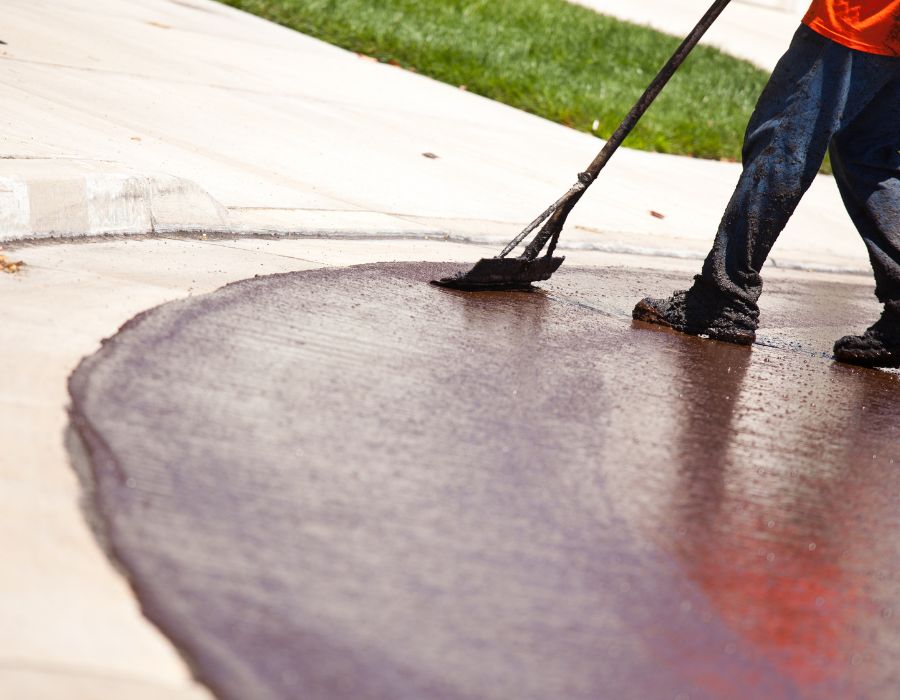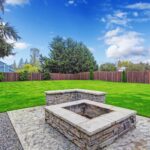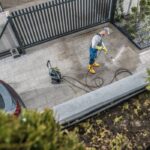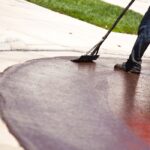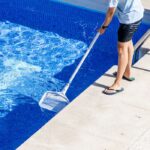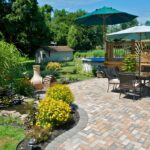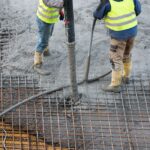In San Antonio, outdoor living is a cherished part of everyday life. Whether it’s relaxing by the pool, hosting family gatherings, or enjoying a shaded patio retreat, your outdoor environment plays a big role in comfort and curb appeal. As a result, homeowners are turning to modern concrete resurfacing Techniques to breathe new life into aging or worn-out surfaces—transforming plain concrete into stunning, durable spaces that elevate both form and function.
The Shift Toward Modern Concrete Resurfacing
Gone are the days when resurfacing meant simply patching cracks or applying a new coat of gray cement. Today’s modern concrete resurfacing techniques have revolutionized the way we think about outdoor upgrades. With advanced materials and application methods, it’s now possible to achieve a wide range of contemporary finish options, from sleek and polished to rustic and textured.
More than just a cosmetic improvement, resurfacing allows for true surface revitalization—restoring structural integrity, improving safety, and extending the life of the underlying concrete. This makes it especially appealing in cities like San Antonio, where fluctuating weather and high foot traffic can take a toll on outdoor surfaces.
Why San Antonio Homeowners Are Choosing Resurfacing Over Replacement
San Antonio homes, particularly those built decades ago, often feature concrete patios, driveways, and walkways that have aged due to sun exposure, moisture, and ground movement. Replacing these surfaces entirely can be costly, time-consuming, and invasive. In contrast, resurfacing offers a streamlined, eco-friendly, and budget-conscious alternative.
Benefits of Resurfacing:
- Cost-Efficient Surface Upgrades: Significantly less expensive than full demolition and reconstruction.
- Time-Saving: Most projects can be completed in just a few days with minimal disruption.
- Eco-Conscious: Limits construction waste by preserving the existing concrete structure.
- Durability Enhancements: Reinforces and protects surfaces against further wear and tear.
- Visual Appeal: Access to a broad array of textures, patterns, and color-infused solutions.
These advantages make resurfacing an ideal solution for both homeowners and businesses seeking professional restoration without the cost and complexity of starting from scratch.
Popular Modern Concrete Resurfacing Techniques in San Antonio
1. Stamped Concrete Overlays
One of the most in-demand contemporary finish options, stamped overlays allow you to mimic the look of high-end materials—such as brick, slate, flagstone, or even hardwood—without the hefty price tag. A concrete resurfacing professional applies a special overlay compound, then uses rubber stamps to imprint patterns before the material sets.
Incorporating color-infused solutions, such as integral pigments and surface stains, adds realistic depth and shading that elevates the overall appearance. Popular patterns in San Antonio include natural stone looks for garden pathways and flagstone finishes for pool decks.
2. Spray Texture Finishes
Commonly used around pools and patios, spray texture finishes offer both visual appeal and practicality. The surface is coated with a spray-applied texture that adds slip resistance and reduces heat absorption, making it perfect for areas that see lots of foot traffic in hot weather.
This type of finish is a great choice for San Antonio’s warm climate, where surfaces can become uncomfortably hot in direct sunlight. Many homeowners opt for light, reflective colors that further reduce heat absorption and blend well with Southwestern or Mediterranean architectural styles.
3. Microtoppings for a Modern Aesthetic
Microtoppings are ultra-thin overlays applied to existing concrete to create a smooth, even surface. These finishes are particularly popular in modern and minimalist design settings. Once applied, the surface can be polished, stained, or sealed to create a sleek, high-end look.
In outdoor settings, microtoppings are used for walkways, entryways, and even covered patios where a seamless, uniform finish is desired. When paired with subtle dyes or textured overlays, they create a refined, contemporary appearance.
4. Self-Leveling Overlays for Major Repairs
When a surface is significantly damaged or uneven, a self-leveling overlay may be required. This resurfacing method creates a brand-new layer that can be stamped, colored, or sealed as desired. It’s particularly useful in high-traffic areas or commercial spaces where functionality must meet visual appeal.
The Importance of Climate-Resistant Materials
San Antonio’s hot summers and mild, rainy winters can wreak havoc on untreated concrete. Moisture infiltration, UV exposure, and thermal expansion all contribute to cracking, fading, and surface degradation. Fortunately, modern resurfacing materials are formulated for superior climate resistance.
Features of Climate-Resistant Materials:
- UV Inhibitors: Prevent color fading and surface deterioration caused by prolonged sun exposure.
- Waterproof Sealers: Protect against moisture intrusion, mold growth, and freeze-thaw cycles.
- Flexible Bonding Agents: Help the overlay expand and contract with temperature changes to avoid cracking.
- Slip-Resistant Additives: Improve safety during wet or humid conditions.
By using climate-resistant materials, you not only enhance aesthetics but also ensure long-lasting performance tailored to San Antonio’s specific environmental conditions.
Designing for Outdoor Transformation
One of the most exciting aspects of concrete resurfacing is the design flexibility it offers. Whether your style is rustic, traditional, industrial, or modern, the options are practically limitless.
Creative Design Elements Include:
- Borders and Inlays: Add contrast or frame spaces for a refined look.
- Multi-Tonal Color Techniques: Create natural depth with stains or integral color.
- Custom Logos or Patterns: Ideal for personalized homes or branded commercial spaces.
- Geometric Layouts: Popular in modern homes with clean, linear aesthetics.
- Faux Natural Materials: Simulate the look of wood planks, slate tiles, or cobblestones.
These decorative finishes are more than skin deep—they’re part of a durable, long-lasting solution that enhances every aspect of your outdoor environment.
Maintenance Tips for Resurfaced Concrete
One of the greatest advantages of modern concrete resurfacing is its low-maintenance nature. With proper care, these upgraded surfaces can retain their beauty and function for over a decade.
Basic Maintenance Guidelines:
- Regular Cleaning: Use mild detergent and water; avoid harsh chemicals that could damage the sealer.
- Annual Inspections: Look for minor cracks or stains and address them promptly.
- Re-Sealing Every 2–3 Years: Depending on sun exposure and traffic, a high-quality sealer should be reapplied to maintain surface integrity and appearance.
- Protective Pads Under Furniture: Prevent scratching or gouging, especially on smoother overlays.
Taking simple steps to maintain your surface ensures it continues to deliver value, beauty, and function long after installation.
Frequently Asked Questions
How do modern resurfacing methods extend the life of existing concrete?
By applying specialized overlays and sealers, modern resurfacing creates a protective barrier that shields the original concrete from moisture, UV rays, and mechanical wear. This not only extends the surface’s life but also enhances its strength and appearance.
Are there specific finishes suited for San Antonio’s warm climate?
Yes. Spray textures, light-colored sealers, and UV-resistant coatings are specifically designed for hot, sunny climates. These finishes stay cooler underfoot and maintain their color and texture longer in harsh sunlight.
What types of design elements can be incorporated during resurfacing?
Design possibilities include stamped patterns, stenciled borders, multi-color finishes, embedded logos, and wood-look textures. Your installer can help you choose options that complement your home’s style and your outdoor living goals.
How frequently should resurfaced areas be sealed or maintained?
Re-sealing is typically recommended every 2 to 3 years. However, frequency may vary based on weather exposure, foot traffic, and the type of finish used. Regular cleaning and prompt repair of minor damage will also help extend surface life.
Final Thoughts: A Smart Investment for Outdoor Living
In a city like San Antonio—where outdoor spaces are used year-round—modern concrete resurfacing offers an ideal way to elevate your property. Whether you want to update an old patio, give your driveway a facelift, or transform a pool deck into a luxury feature, resurfacing delivers the beauty of premium materials at a fraction of the cost.
With a wide array of contemporary finish options, climate-resistant materials, and creative design flexibility, resurfacing is both a practical and artistic upgrade. It provides not only a visual outdoor transformation but also long-term surface upgrades that withstand the test of time and Texas weather.
For the best results, always work with experienced professionals who understand local conditions and can recommend finishes tailored to your specific needs. With the right planning and execution, your concrete surfaces can become a standout feature that enhances your home’s value, functionality, and style for years to come.

